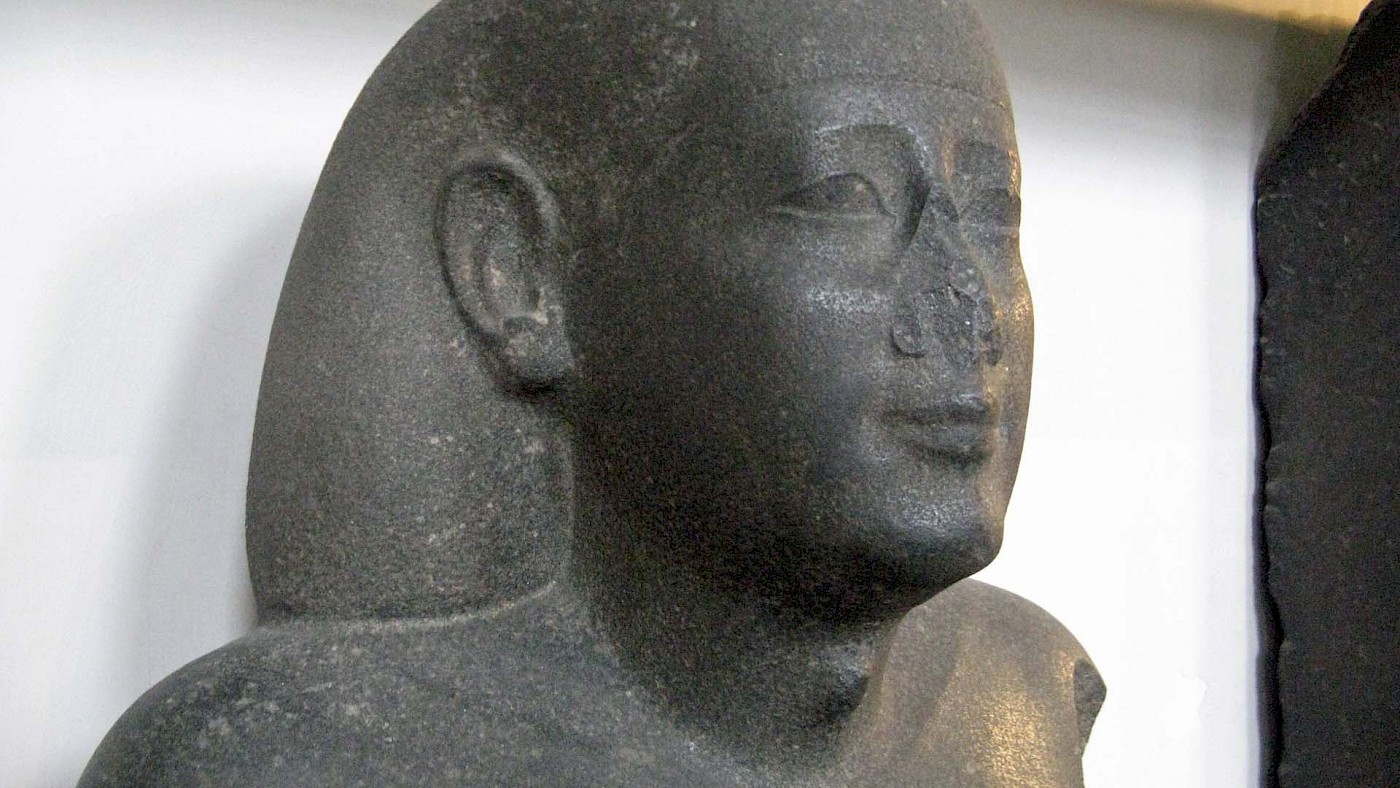Ancient Egyptian art is often thought to be highly conventional, with sculptors working according to set patterns from which there can be little deviation. This isn’t strictly true, however. While indeed a lot of Egyptian art is guided by conventions, it did leave some room for artistic flourishes and for adding personal details to the subjects being portrayed.
Sometimes, these differences in style are striking. A good example is the art of the so-called Amarna period, made during the time of king Akhenaten (r. 1353/1551–1334/1331 BC). Akhenaten is perhaps known as the Egyptian king who tried to establish a monotheistic religion centred on the Aten (represented as the sun), and as the father of the famous young king Tutankhamun. During his reign, Egyptian art allowed for such unconventionally personal and touching scenes such as this one from a house altar, showing Akhenaten, Nefertiti, and three of their daughters:

Which brings us back to the bust of a man with a distinct Adam’s apple. The term itself – “Adam’s apple” – is based on the mistaken belief that when Adam, the first man, ate the forbidden fruit, a piece got lodged in his throat. There is no ancient evidence to support this idea, and the term might be based on a mistranslation of a Hebrew word.
In any event, this portrait of a man, while seemingly conventionally Egyptian at a glance, shows that it ancient Egyptian artists were allowed to incorporate personal touches into their work. Stylistic changes, while subtle, have also allowed archaeologists to date the portrait to the Late Period (664–332 BC), and more specifically to perhaps ca. 560 BC. It is made from black granite.
Thanks to his prominent Adam’s apple, those who knew the man in life might have recognized him despite the rather generic facial features of his stone likeness.
